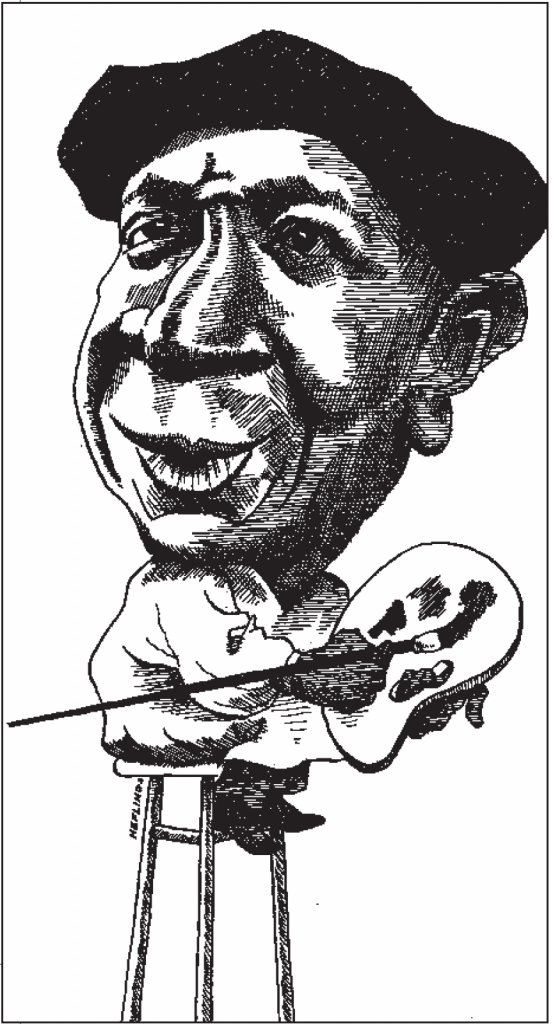BEAUFORD DELANEY died in a Parisian mental hospital in 1979, alone and impoverished, tortured by alcoholism and schizophrenia. At the time, his closest friend, the author James Baldwin, told people that Delaney’s struggle to live as a black man, a gay man, and an artist had simply proved too much. A recent exhibition of Beauford Delaney’s work at the Sert Gallery of the Harvard University Art Museums, however, shows the painter successfully reconciling race, sexuality, and exile, and doing so with a passion for experimentation.
For a time, Delaney was a minor celebrity in the expatriate community of postwar Paris, a friend of Colette and Henry Miller, of Jean Genet and James Jones. In those same years, between 1953 and the mid-1960’s, he created a remarkable body of work using vibrant color to translate the unique light of Paris into the language of Abstract Expressionism. Today, however, he is hardly a well-known figure in American art. What happened? Surely prejudice had something to do with it: his position as a gay man, an African-American, an expatriate, and a sufferer of mental illness made it difficult for him to fit in wherever he went. But the decision to be an outsider, I believe, was ultimately Delaney’s own. As it did for his friend James Baldwin, exile offered Beauford Delaney the space to work through his sense of being different; it also gave him somewhere to hide from that difference.
 From his preacher father came Delaney’s love of spirituals; his mother indulged her children’s artistic inclinations. (Delaney’s brother Joseph also achieved modest success as a painter.) Born in 1901, Delaney grew up in the segregated South of Knoxville, Tennessee. His first art teacher convinced Delaney to strike out for Boston in 1924. Hardly the center of the early 20th-century art world, Boston was nonetheless a fine place for Delaney to study painting and sketch the Old Masters’ works in museums. African-American cultural life in Boston was then in the midst of a flowering that has since been overshadowed by the Harlem Renaissance. It was there that Delaney encountered the poet Countee Cullen, also a black man struggling with his sexuality, who was studying at Harvard University.
From his preacher father came Delaney’s love of spirituals; his mother indulged her children’s artistic inclinations. (Delaney’s brother Joseph also achieved modest success as a painter.) Born in 1901, Delaney grew up in the segregated South of Knoxville, Tennessee. His first art teacher convinced Delaney to strike out for Boston in 1924. Hardly the center of the early 20th-century art world, Boston was nonetheless a fine place for Delaney to study painting and sketch the Old Masters’ works in museums. African-American cultural life in Boston was then in the midst of a flowering that has since been overshadowed by the Harlem Renaissance. It was there that Delaney encountered the poet Countee Cullen, also a black man struggling with his sexuality, who was studying at Harvard University.
Christopher Capozzola is assistant professor of history at MIT and a frequent contributor to this journal.






